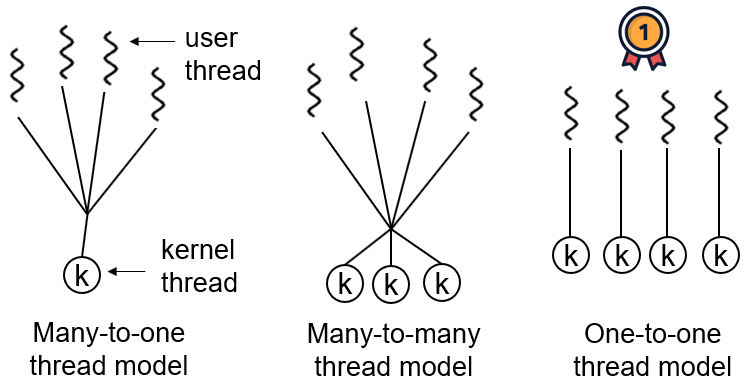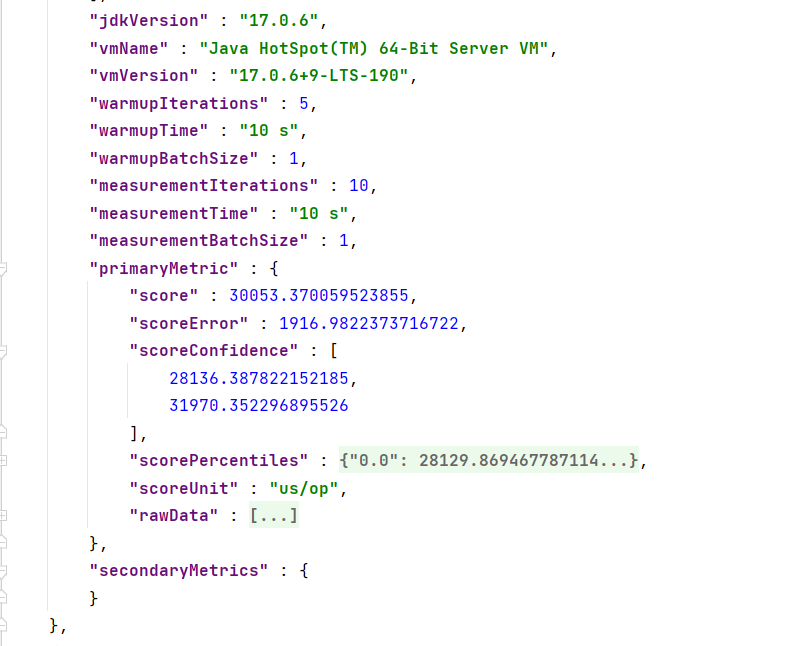JavaSe:多线程
0601
🎈Java多线程
⭐基本概念
程序(program)
- 是为完成特定任务、用某种语言编写的一组指令的集合。即指一段静态的代码,静态对象。
进程(process)
- 是程序的一次执行过程,或是正在运行的一个程序。是一个动态的过程:有它自身的产生、存在和消亡的过程。——生命周期
- 如:运行中的QQ,运行中的MP3播放器
- 程序是静态的,进程是动态的
- 进程作为资源分配的单位,系统在运行时会为每个进程分配不同的内存区域
线程(thread)
-
进程可进一步细化为线程,是一个程序内部的一条执行路径。
- 若一个进程同一时间并行执行多个线程,就是支持多线程的
- 线程作为调度和执行的单位,每个线程拥有独立的运行栈和程序计数器(pc),线程切换的开销小 .
- 一个进程中的多个线程共享相同的内存单元/内存地址空间它们从同一堆中分配对象,可以访问相同的变量和对象。这就使得线程间通信更简便、高效。但多个线程操作共享的系统资源可能就会带来安全的隐患。

⭐多线程程序的优点
-
提高应用程序的响应。对图形化界面更有意义,可增强用户体验。
-
提高计算机系统CPU的利用率
-
改善程序结构。将既长又复杂的进程分为多个线程,独立运行,利于理解和修改
⭐ cpu线程数和Java多线程
- 线程是CPU级别的,单个线程同时只能在单个cpu线程中执行
- Java多线程并不是由于cpu线程数为多个才称为多线程,当Java线程数大于cpu线程数,操作系统使用时间片机制,采用线程调度算法,频繁的进行线程切换。
- 线程是操作系统最小的调度单位,进程是资源(比如:内存)分配的最小
- Java中的所有线程在JVM进程中,CPU调度的是进程中的线程
⭐ 单核CPU和多核CPU的理解
-
单核CPU,其实是一种假的多线程,因为在一个时间单元内,也只能执行一个线程的任务。例如:虽然有多车道,但是收费站只有一个工作人员在收费,只有收了费才能通过,那么CPU就好比收费人员。如果有某个人不想交钱,那么收费人员可以把他“挂起”(晾着他,等他想通了,准备好了钱,再去收费)。但是因为CPU时间单元特别短(4.1Ghz),因此感觉不出来。
-
如果是多核的话,才能更好的发挥多线程的效率。(现在的服务器都是多核的)
-
一个Java应用程序java.exe,其实至少有三个线程:main()主线程,gc()垃圾回收线程,异常处理线程。当然如果发生异常,会影响主线程。
🌟并行与并发
-
并行:多个CPU同时执行多个任务。比如:多个人同时做不同的事。
-
并发:一个CPU(采用时间片)同时执行多个任务。
比如:秒杀、多个人做同一件事。
🌟需要多线程的情况
-
程序需要同时执行两个或多个任务。
-
程序需要实现一些需要等待的任务时,如用户输入、文件读写
操作、网络操作、搜索等。
- 需要一些后台运行的程序时。
🕺 多线程的创建方式1/4:创建继承于Thread的子类
- 创建一个继承于Thread类的子类
- 重写Thread类的run() -->主要针对方法体,将要执行的操作写入到run()中。
- 创建thread的子类的对象
- 通过此对象调用start()
- 启动当前线程
- 调用当前线程的run()方法
- 直接调用run()不会多分线程,会在main线程中进行
- 想要启动多个线程,需要new 多个MyThread对象
1 | package pers.dhx_.java0601; |
✋练习
目的:创建2个线程,分别遍历奇偶数
- 写2个Thread子类 ,分别orverride run()
- 利用匿名对象
1 | package pers.dhx_.java0601; |
🍅注意点:
-
如果自己手动调用run()方法,那么就只是普通方法,没有启动多线程模式。
-
run()方法由JVM调用,什么时候调用,执行的过程控制都有操作系统的CPU调度决定。
-
想要启动多线程,必须调用start方法。
-
一个线程对象只能调用一次start()方法启动,如果重复调用了,则将抛出以上的异常“IllegalThreadStateException”。
🍅Thread类的有关方法
-
void start(): 启动当前线程。调用当前线程的run()run(): 通常需要overrideThread类中的run()方法,将创建的线程要执行的操作声明在run()中
-
String getName(): 返回线程名称
-
void setName(String name):设置线程名称
-
static Thread currentThread():
- 返回当前线程。在Thread子类中就是this,通常用于主线程和Runnable实现类
-
static void yield():
-
暂停当前正在执行的线程,把执行机会让给优先级相同或更高的线程。
-
若队列中没有同优先级的线程,忽略此方法
-
-
join() : 当线程a中调用b的 join() 方法时,a将被阻塞,直到b线程执行完为止 ( 低优先级的线程也可以获得执行)
-
static void sleep(long millis):
- (指定时间:毫秒) 令当前活动线程在指定时间段内放弃对CPU控制,使其他线程有机会被执行,时间到后 重排队。
- 抛出InterruptedException异常
-
stop(): 强制线程生命期结束,不推荐使用
-
boolean isAlive() :返回boolean,判断线程是否还活着
1 | package pers.dhx_.java0601; |
🍅线程优先级的设置
- 线程的优先级等级
- MAX_PRIORITY:10
- MIN _PRIORITY**:**1
- NORM_PRIORITY:5
- 涉及的方法 (both non-static)
- getPriority():返回线程优先值
- setPriority(int newPriority) *改变线程的优先级
✋注意点:
- 优先级不绝对,依然会有交叉
- 只能说高优先级的线程要抢占cpu的执行权,但是只是抢占,概率较高
1 | package pers.dhx_.java0601; |
⭐ 说明
-
线程创建时继承父线程的优先级
-
低优先级只是获得调度的概率低,并非一定是在高优先级线程之后才被调用
⭐抢票:By method 1
1 | package pers.dhx_.java0601; |
💃多线程的创建方式2/4: 实现Runnable 接口
- 创建一个实现了Runnable接口的类
- 实现类去实现Runnable中的 抽象方法
- 创建实现类的对象
- 将此对象作为参数传递到Thread类的构造器中,创建Thread类的对象
- ⭐public Thread(Runnable target)
- 通过Tread类的对象调用start();
1 | package pers.dhx_.java0601; |
🌟抢票:By method 2 :Runnalbe
1 | package pers.dhx_.java0601; |
⭐1 2 方式对比
-
如果有共享数据,天然就需要多个对象。(method 1)
-
Runnable优先,节约资源,
原因:
- 不受单继承的局限性
- 实现方式更适合多个线程共享的数据的情况。
-
都需要重写run();











